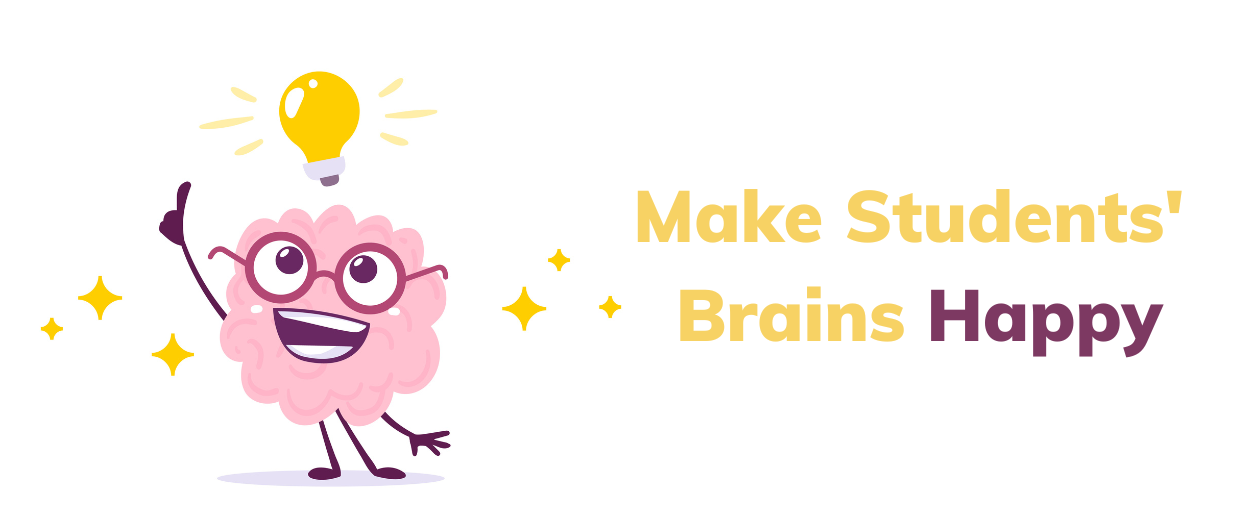How to Employ Cognitive Load Theory in Online Learning
It was 2006 and I was foolish:
“By golly I’ve got it!” I exclaimed, “Students can do their math assignments on computers using the equation editor in Word! Then they don’t have to print anything off so we can save trees and teach math!”
Worst. Idea. Ever. It quickly became apparent that my students were performing very poorly. For their sake, thank goodness, we learned that typing out math equations was a terrible way for students to learn, so we quickly stopped that and let them go back to good ol’ fashioned paper and pencil. It was almost a decade later that we discovered a framework that explained why it was such a bad idea: Cognitive Load Theory.
What is Cognitive Load Theory (CLT)?
Cognitive Load Theory says that if we can help our brains (cognitive) to do less heavy lifting (load) then we remember more. Happy brains = better learning.
When my students were spending too much mental energy figuring out how to write formulas in Word, they didn’t have enough capacity left to actually learn the math concepts. CLT states that reducing the cognitive load required to engage in a learning task leaves more capacity in working memory for building the schemas necessary to move towards expertise. These schemas are crucial because they help us organize and utilize our long-term memory. They function like indexes that help us make sense of the facts stored in long-term memory. When we build, extend, or improve our schemas, we call this deep learning. It’s the lightbulb or “aha” moment that so many of us got into teaching to help facilitate. They are the building blocks that help learners become experts on a topic.
What impacts cognitive load?
If we accept the above premise, then it begs the question: What factors impact cognitive load, and how can we minimize them? To answer this we first need to understand that there are two categories of cognitive load.
The first category is intrinsic cognitive load. This is the complexity of the content to be learned and, to a large extent, it is fixed to the learning task. Learning how to add two and two is intrinsically less complex than learning how to factor a polynomial. Knowing the fact that Hitler invaded Poland on September 1st, 1939 is intrinsically less complex than coming to a deep understanding of the factors impacting his rise to power in the decades previous.
The second category is extraneous cognitive load. This is everything else that is not core to the content we are attempting to understand, such as visuals, language, timing and even the environment we are learning in. All of these can impact how much room we have in our working memory (the cognitive load) and therefore limit how much capacity our mind has for building those schemas that will lock the learning into long-term memory. The intrinsic complexity of the task is usually set, so as teachers or curriculum designers, we need to focus instead on minimizing the extraneous load. Put another way, we should make it our goal to add as little extra brain work for our students as possible.
Why is Cognitive Load Theory crucial for digital instruction?
This goal is especially pertinent in the context of digital curriculum. This is due to a few factors. First of all, the digital environment is prone to a plethora of distractions. Second, learners often engage with digital content without a teacher immediately present with them to help guide the learner in making sense of it — i.e., building the schema. Finally, and perhaps most applicable to our discussion here, there are just so many fancy bells and whistles available to us in digital learning: videos, gifs, interactive elements, moving, bouncing, flashing, go, go, go. It is so easy to fall into the trap of attempting to make our digital content more engaging that we end up adding all kinds of extraneous cognitive load. We may end up with content that is more engaging but less effective.
This is why it is imperative to evaluate both the content we are creating and the content we are curating for our curriculum against the cognitive load model.
How do we apply Cognitive Load Theory to digital content?
So let’s get practical. Below we have assembled a small list of dos and don’ts with some explanation. Once we understand the general framework, then applying the principle of removing extraneous load starts to feel like common sense. Let’s dig in.
| Do… | Don’t… |
|---|---|
start with a review. This will help with the ultimate goal, which is schema acquisition. Bringing into working memory aspects of pre-built schemas will make the task of acquiring and storing new schemas in the learners long-term memory easier. | review too much. Too much review can backfire by taking up all of the learners’ working memory capacity, and thereby leaving no room for the new topic. |
explain concrete examples. It’s not enough to give an example of the learning task. We need to explain it. Some of the earliest research in CLT focussed on how unexplained examples open up all kinds of loops that the learner needs to use precious working memory to close on their own. So give examples and explain their significance. | go on rabbit trails. How many times have you sat through a lecture and left thinking, “I have no idea what he was talking about but that story about his cat was hilarious!” You have just experienced learning loss due to extraneous cognitive load. Shoot the rabbit. |
use appropriate accurate terminology. It’s important to use the correct language that can build schemas that will interlock for students’ future learning. We might be tempted to avoid this to reduce cognitive load, but that will likely come back to bite us later on. | add extra words to sound smart. In fact, try to aim two or three years below grade level in all of your explanations. Using common words and avoiding “industry jargon,” except where absolutely necessary, massively reduces cognitive load. |
ask a guiding question. Why? You guessed it: schema acquisition. Asking a question is a powerful tool to keep an open loop in working memory, that the learner will want to close by finding a place to store it in long term memory with a schema. This is also why story can be a powerful learning tool. | ask too many questions. While it can be tempting to try to lead students to discover a key idea by repeatedly asking questions, more often than not this ends up overwhelming the learner’s working memory and all they are left with is a headache. |
employ graphic organizers and representative images. A picture is worth a thousand words. Especially one that helps solidify an idea from the narration or text. We like to think about visuals as mnemonic triggers: how will this help the content stick? | add images or graphics just for engagement value. A learner can lose valuable space in working memory trying to figure out why this image is here, and how it relates. If the image is just to try to make the page look less boring, consider removing, replacing, or moving it to a location where it is unambiguously extraneous. |
use intentionally crafted videos. Videos can take advantage of the redundancy principle of cognitive load, by presenting simultaneous images with narration. See some of our principles for effective video development. | assume that videos are always better. While videos are more intrinsically engaging, they can very easily add a significant amount of extraneous cognitive load. See some of our principles for effective video development. |
allow students to use tools they are comfortable with. Like pencil and paper. | force students to learn new tools and new content simultaneously. Such as using equation editors to do math assignments. 🤦♂️ |
As you can see, applying cognitive load theory requires balance. Any learning requires intrinsic cognitive load, so we need to do our best to choose learning tasks that minimize intrinsic cognitive load, and then work to eliminate as much extraneous cognitive load as possible. Perhaps you could sum up the whole table above by the statement often attributed to Einstein:
Make things as simple as possible, but not simpler.
Now that you have a quick primer on Cognitive Load Theory, and are building your intuitions about what is intrinsic and what is extraneous, take a look at your course with these new eyes and ask the question, “Will this lesson make my students’ brain happy?”
About the Author






